Emily Gertrude Lea (1902-1976): Habits, Cultures & Beliefs
Over the twentieth century, the cultural and recreational habits of the working class began to change. For the first time ever, working class families had a disposable income and the creation of Bank-holidays allowed more time for leisure. Before now, this had been an area of social control and discipline, however with the rise of industrialisation and growth of the times, class distinctions began to become more prominent and provoked fears that class culture was unregulated. This prompted religious groups to begin campaigns against activities they found inappropriate or likely to cause rowdy behaviour in an attempt to clean up culture on the streets.
It was decided that changing the recreational activities the working class engaged in would help improve their behaviour, many thought that recreation or leisure which included engaging with the arts would be civilising and thus improve culture and character. This resulted in a lowering of transport fees to make travel more accessible to the working classes and the introduction of bank holidays in a bid to encourage participation in what was deemed as civilised recreation.
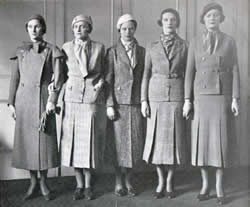
In spite of this effort to improve culture, leisure time and other cultural habits such as clothes were still differentiated by class and we see hints of this throughout Lea’s memoir. Musing over the clothes Lea used to wear she comments “… I revelled in the change of clothes although I hated the starch put into them which scratched my neck. Of course I was never lucky enough to have white shoes and socks and a white jap silk dress like some children had” (9) highlighting that clothing was an indicator of class.
Throughout Leas memoir, we see her engage in a variety of cultural activities. As previously mentioned in my education and schooling blog, when Lea attended Sunday school, there were various activities and social engagements such as the “tea drinking party” which Lea attended alongside her mother, their aim was to encourage a sense of community. Such events as these were far more frequented by women, who had less time and money to spend on leisure activities due to domesticity tasks, and thus women’s culture was mainly self generated through interaction with the local community.
Even children’s activities and playing habits were a mark of their working class background. Working class children were more likely to be found playing on the streets, with their houses either being too small or too cramped, working class children had to improvise and use their imagination as they had less stuff, whereas middle class children were more likely to be found inside playing with their toys. Lea falls into the working class stereotype remembering school holidays as a time spent enjoying “long walks for spring flowers and playing with dolls” (6).
An annual event in Nottingham even to this day, Lea recalls attending Goose Fair. Considered one of the UK’s most prestigious fairs it has dated back over 700 years. It boasts a variety of rides, games and markets, at the time being famed for its selection of cheeses, making a popular day out for the working classes. Lea states that it was “…one of my delights, but usually marred by rain so that the Fair Ground was ankle deep in mud” (6).
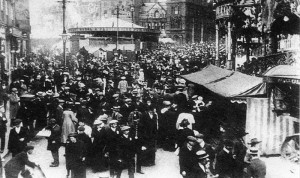
Lea also recalls her first cinema experience or “moving pictures” as it was referred to, commenting that she “was mystified as it looked as if it was always raining”(6). Previous to this the main form of entertainment Lea enjoyed was through magic lantern shows at the cost of one penny which transformed the ‘local palace’ into one of the last theatres of its time. Here Lea remembers viewing ‘Aladdin’, ‘The Sorrows of Satan’ and ‘The Miracle’.
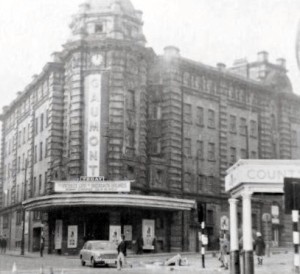
Overtime we see the development of the cinematic experience. In 1931 Lea reminisces “the old silent pictures with a pianist or orchestra were superseded by the talking pictures as they now became. This seemed remarkable to me… not only did the actors speak but background music and effects were produced… The first talking film we saw was the Gaumont called “Behind that curtain”… I was deeply interested”. (25)
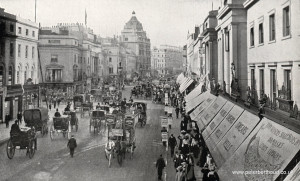
As Lea ages and begins to earn more money through her work, we see Lea enjoy a variety of holidays around different parts of England. With travel becoming cheaper, and capitalists beginning to cater to a new working-class market, Lea was able to gain her first experience of London in 1915 as she visited colleagues and churches in Oxford and Surrey. In the year of 1918 Lea also mentions a visit to Woburn Sands with a friend staying at lodgings for £1.10.0 each. Once again the week was spent “walking through the lovely woods that surrounded the place, visiting Abbey seat of the Duke of Bedford.”
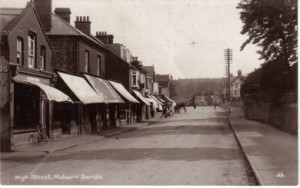
Despite a bout of seasickness, Lea also enjoyed visiting her auntie in Liverpool and travelling around the Mersey recalling the “vivid blue of the bay” (15). Lea’s favourite trip however was in Scarborough in 1919. Having to take their own supply of butter, sugar and eggs due to the country still rationing, Lea notes that she was left broke at the end of her trip but deemed the expense worthwhile as they managed to see the musical comedy Betty “which I thoroughly enjoyed”(13).

- Lea, Emily Gertrude.‘Reflections In the setting sun…I Remember after fifty years’Burnett Archive of Working Class autobiography, University of Brunel Library, 2-469
- The origins of Goose Fair by Roy Manterfield available: Last accessed 29th December 2013
Images
- Fashion in the 1930’s:
- Goose Fair:
- Regent Street:
- Woburn sands:
- Musical Comedy:

Leave a Reply